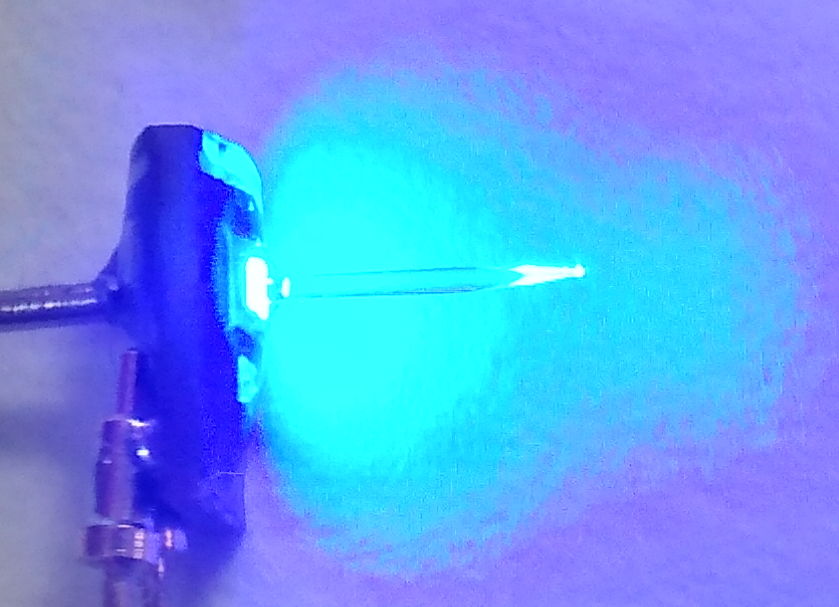[24-OCT-24] Our Implantable Light-Emitting Diodes (ILEDs) operate with an Implantable Stimulator-Transponder (IST) to provide optical stimulation for experiments in optogenetics. Our Surface-Mount Light-Emitting Diodes (SMLEDs) come in red, green, and blue. They are designed to be fastened to the surface of an organ and illuminate the tissue within. Our Fiber-Coupled Light-Emitting Diodes (FCLEDs) come in green and blue. They are designed to be anchored to the skull and provide illumination deeper in the brain.

The SMLEDs are designed to illuminate the surface of light-sensitive tissue. The LED is equipped with sockets that accept the pins at the end of stimulator leads.

The FCLEDs are a light-emitting diode with a fiber-optic light guide glued to its surface. The light guide carries roughly half the LED's light a to a tapered glass tip, where the light is emitted in all directions. The light guide can be four to ten millimeters long. It allows us to deliver optical stimulation to tissue several millimeters below the surface.
We are able to invoke optogenetic response with SMLEDs mounted on the surface of the brain, and with FCLEDs anchored to the skull. The FCLED is easier to implant. We can make a small hole in the skull for the fiber to pass through and cement the base of the FCLED to the skull. The SMLED, however, requires a larger hole, and once placed in the hole, must be anchored by cement place over, but not under, the LED. Furthermore, the FCLED is more efficient. We found that 1-ms flashes from an FCLED were able to invoke optogenetic response, while, 10-ms flashes were required from the SMLED. We suspect that tissue and cement covering the dome of the SMLED are responsible for attenuating its light output, but we are not certain.
Examples of Optogenetic Response: Examples of EEG recordings with synchronous video showing optogenetic response.
Implantable Light-Emitting Diode (A3036IL): An implantable light-emitting diode with and without light guide.
Implantable Stimulator-Transponder (A3041): A non-rechargeable, long-life, implantable stimulator that acknowledges command reception, provides synchronizing signal, and monitors its battery voltage.
Development Logbook: Account of the first eight years of development of the fiber-coupled LEDs.
News Group: News group for optogenetics and telemetry users.
Parts and Prices: A list of devices and their prices.